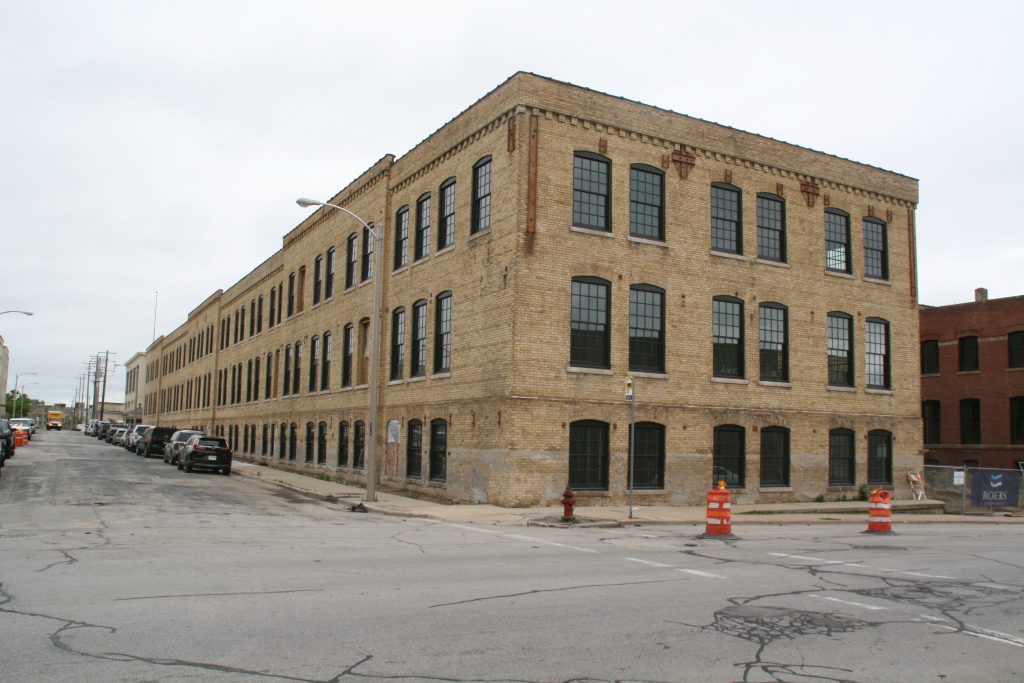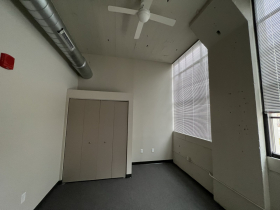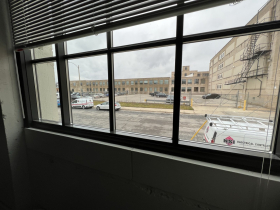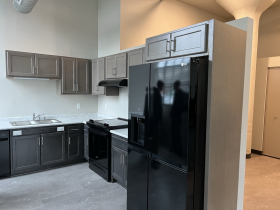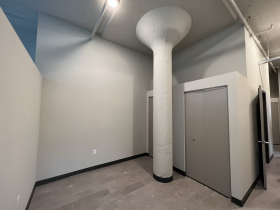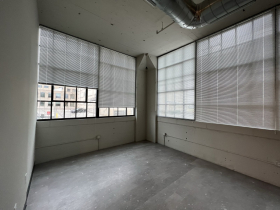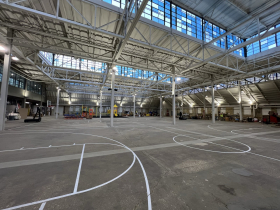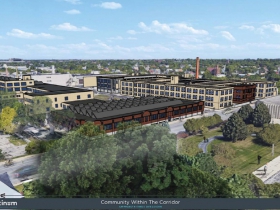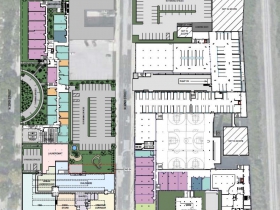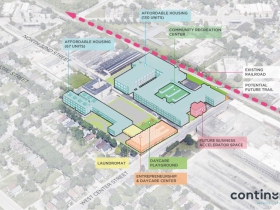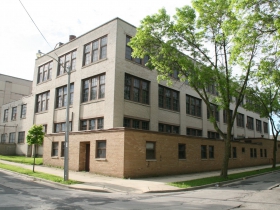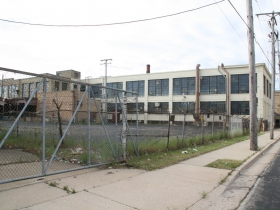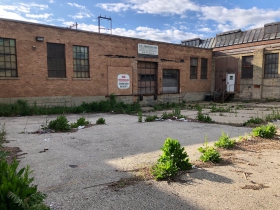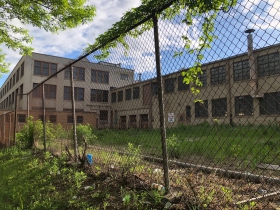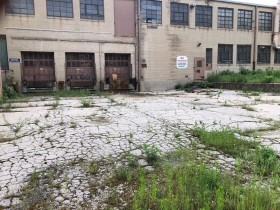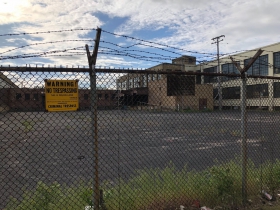Troubled Apartment Complex Paying Tenants To End Leases
DNR won't let tenants return to Community Within the Corridor for several months.
Nearly three months after they were evacuated because of environmental contamination issues, residents still don’t know when they will be allowed to move back into The Community Within The Corridor (CWC) development at N. 32nd Street and W. Center Street. But they’re now being offered thousands of dollars to stop waiting.
Meanwhile, a class-action lawsuit was filed in Milwaukee County Circuit Court that accuses the development team of actively misleading the Wisconsin Department of Natural Resources (DNR) and rushing residents into the building that had known environmental issues.
The approximately 150 residents of the eastern half of the CWC complex were evacuated on March 25 by the Milwaukee Health Department (MHD) after documentation submitted to the DNR showed several areas of the building had elevated levels of an airborne carcinogen known to cause heart defects and other disorders in unborn children and cancer for children and adults subject to long-term exposure. The first residents had only moved into that part of the 197-unit property, the largest private affordable housing complex in Wisconsin, in December.
The development team, led by Minnesota-based Roers Companies, is now offering the displaced residents up to $5,000 per household to terminate their leases. It’s also moving to stop paying displaced residents to live in a series of hotels. Tenants have until June 23 to sign the lease termination agreement and the company plans to end food, transportation and housing stipends on July 14.
But the class-action lawsuit, filed by law firm Barton Cerjak on behalf of resident Tiffany Bowen, alleges that accepting the funding comes with a “significant catch” – residents must release any and all legal claims against the development team, including those relating to exposure to the known-carcinogen to which they may have been exposed.
The oldest building in the former factory dates back to 1906. The multi-block complex was long occupied by Briggs & Stratton, but had been used for storage before the redevelopment work began. The development team, with environmental consultant K. Singh & Associates, had been working with the DNR since 2020 on a mitigation strategy for industrial environmental contamination. The DNR informed the development team that a vapor mitigation system would be necessary to properly vent trichloroethylene, commonly called TCE, that was found under the soil in the eastern building. TCE is a popular industrial chemical and can be successfully mitigated with the proper remediation processes.
As several public emails reveal, the DNR maintains it had provided written warnings dating back to 2021 that the development team should not move anyone into the building until the system could be fully tested. Roers, in a March statement, said it tested the system before anyone moved in. But records submitted to the DNR, the trigger for the evacuation, showed a TCE concentration of more than 190 times the acceptable level in one part of the building and elevated levels in several others.
Bowen, according to the lawsuit, moved into the building in February with her son. The lawsuit alleges both her and her son got sick and sought medical care, “where healthcare providers had difficultly diagnosing her,” shortly after moving into the building.
Roers, in a written request to the DNR on March 27, asked for residents to be allowed back into portions of the second and third floors of the building where elevated levels weren’t found. The DNR denied the request and suggested a series of adjustments to the developer’s proposed mitigation strategy. A June letter from the DNR, Wisconsin Department of Health Services and City of Milwaukee to residents says that the DNR likely won’t sign off on letting residents back into the building until next winter at the earliest because it wants to see the system tested when the building’s heating system is running. The city, according to the letter, won’t lift its health order until the state says it is safe to do so. A separate DNR emergency order, issued after the evacuation, remains in effect.
The DNR, according to city officials, never told the Department of Neighborhood Services (DNS) to hold off issuing an occupancy permit for the building. DNS reviews buildings for compliance with the zoning, building and fire codes when issuing an occupancy permit. DNR officials claim they weren’t aware people moved in until March, but had worked with city officials in January to develop a plan for delaying occupancy if test results showed elevated contamination levels.
The lawsuit and buyout offers are just the latest twists for an apartment complex that opened with great fanfare, and substantial government support.
The financing package for the $68 million project, based on a 2020 report, includes a variety of public sources. The Wisconsin Housing and Economic Development Authority is providing $19.7 million in federal low-income housing tax credits. The National Park Service and state are providing $17.43 million in historic preservation tax credits, which requires much of the historic nature of the complex to be preserved. Other funding sources include a bank loan, $1 million of the city’s federal Community Development Block Grant allocation and a $3.15 million developer-financed tax incremental financing district. The district will effectively rebate increased property tax payments for a period of up to 20 years.
The use of low-income housing tax credits as the primary source ensured that the apartments were leased at federally-regulated below-market rates, intended not to exceed 30% of a qualifying household’s income. But those lower-income residents now find themselves looking for new housing and similar tax-credit-backed projects often have waiting lists.
The lawsuit alleges that residents were rushed into the complex so the development team could secure the tax credits. Since the evacuation, DNR officials have suggested in writing multiple times that prosecution could be pursued through the Attorney General.
The western portion of the complex is still occupied by residents, the first of which moved in last July.
During a tour in December as part of a Redevelopment Authority of the City of Milwaukee meeting, construction was still ongoing on commercial space in the complex. Design on the project is being led by Continuum Architects + Planners and general contracting by Greenfire Management Services. A partnership of Que El-Amin, Mikal Wesley and Rayhainio Boynes led the development locally, but the three developers are minority partners in the project.
Photos
Rendering and Site Plan
Pre-Construction Photos
If you think stories like this are important, become a member of Urban Milwaukee and help support real, independent journalism. Plus you get some cool added benefits.
More about the Community Within The Corridor development
- The Community Within The Corridor Celebrates Completion, Reopening - Jeramey Jannene - May 30th, 2025
- Plats and Parcels: Settlement Reached For Contaminated Apartment Complex - Jeramey Jannene - Nov 26th, 2023
- Eyes on Milwaukee: Troubled Apartment Complex Paying Tenants To End Leases - Jeramey Jannene - Jun 19th, 2023
- Plats and Parcels: State Could Prosecute Community Within Corridor Developers - Jeramey Jannene - Apr 2nd, 2023
- Eyes on Milwaukee: New Milwaukee Apartment Building Closed For Health Emergency - Jeramey Jannene - Mar 28th, 2023
- Eyes on Milwaukee: Inside Wisconsin’s Largest Private Affordable Housing Complex - Jeramey Jannene - Dec 30th, 2022
- Friday Photos: Community Within The Corridor Expects First Residents In July - Jeramey Jannene - May 27th, 2022
- Friday Photos: The Community Takes Shape Within the Corridor - Jeramey Jannene - Aug 20th, 2021
- Eyes on Milwaukee: Biggest Ever Affordable Housing Project Advances - Jeramey Jannene - Jun 30th, 2020
- Plats and Parcels: Huge Affordable Housing Project for 32nd and Center - Jeramey Jannene - Jun 14th, 2020
Read more about Community Within The Corridor development here
Eyes on Milwaukee
-
Church, Cupid Partner On Affordable Housing
 Dec 4th, 2023 by Jeramey Jannene
Dec 4th, 2023 by Jeramey Jannene
-
Downtown Building Sells For Nearly Twice Its Assessed Value
 Nov 12th, 2023 by Jeramey Jannene
Nov 12th, 2023 by Jeramey Jannene
-
Immigration Office Moving To 310W Building
 Oct 25th, 2023 by Jeramey Jannene
Oct 25th, 2023 by Jeramey Jannene


